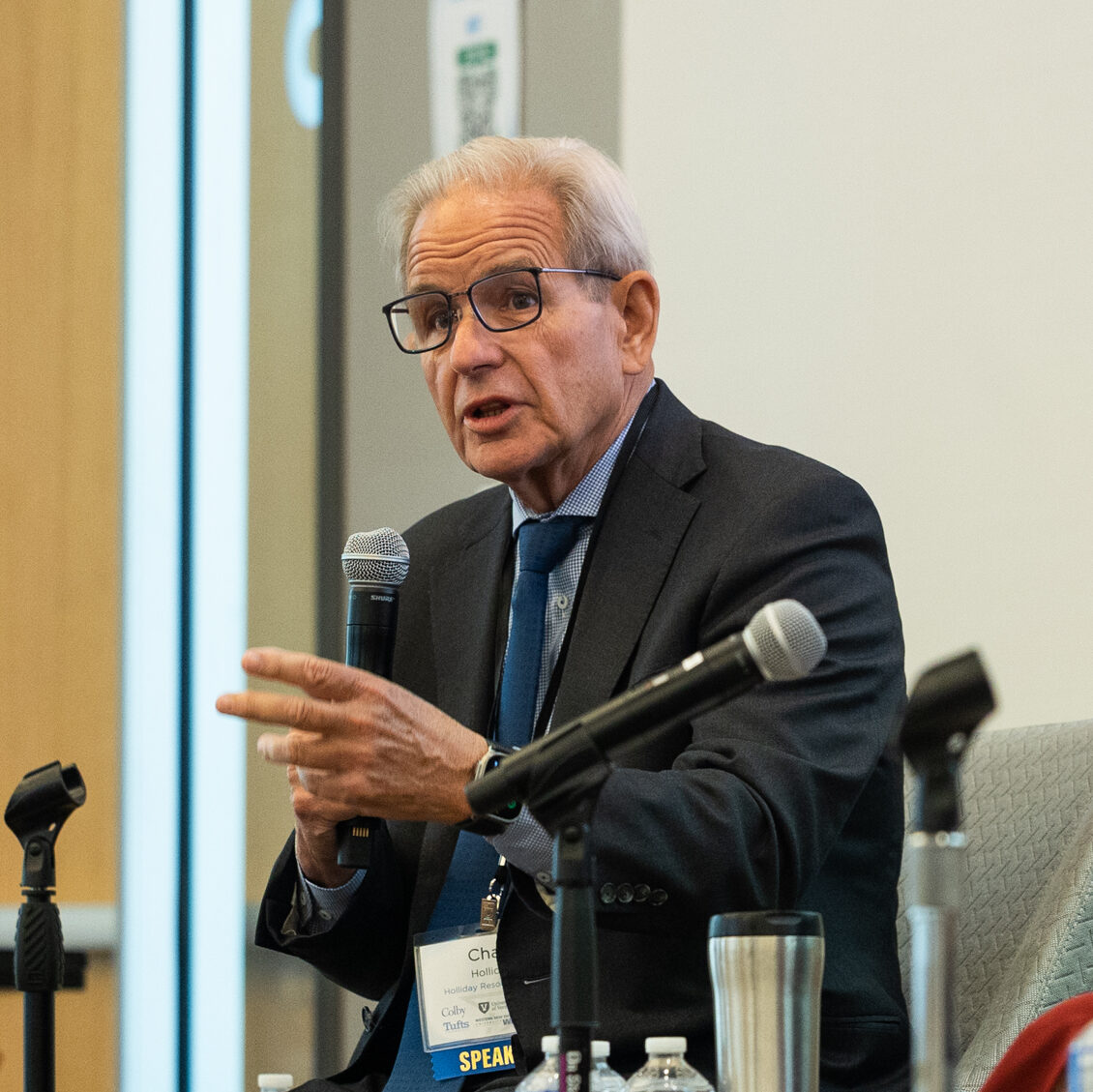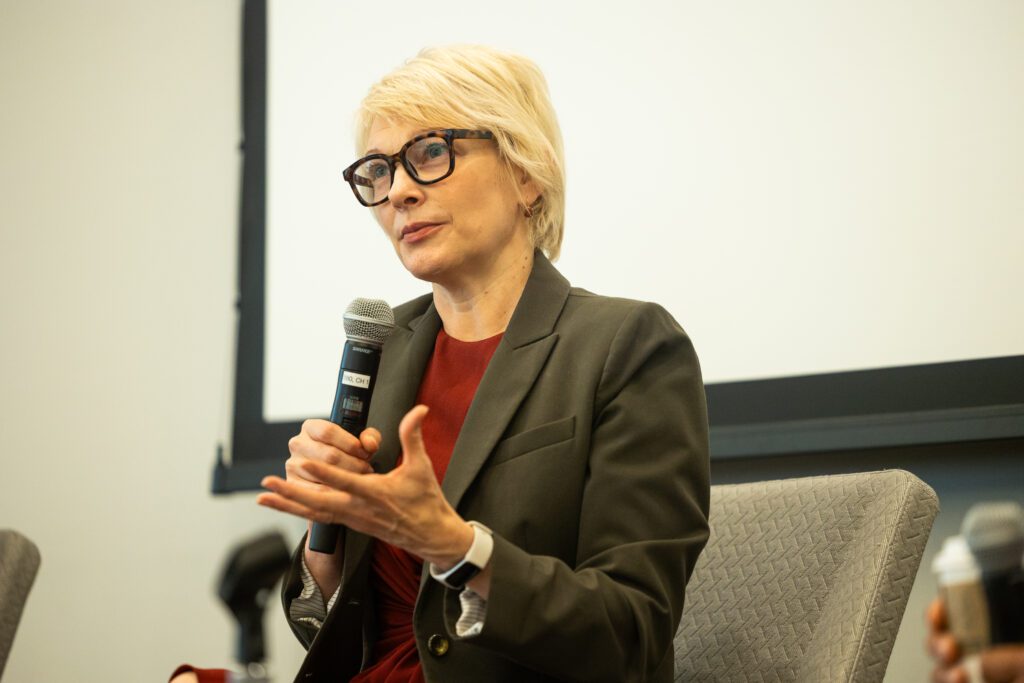
Mr. Chad Holliday
Chair, Global Federation of Competitiveness Councils;
Chair Emeritus, Council on Competitiveness
Dr. Emily Reichert
CEO, Massachusetts Clean Energy Center
Moderator: Dr. Reginald Brothers
Operating Partner, AE Industrial
AE Industrial Operating Partner Reginald Brothers opened the conversation by invoking the “Hargam Catechism,” a three-part framework for evaluating innovation: What is the problem? How is it being solved today? And how should we solve it? Framing the discussion this way, Dr. Brothers asked Council on Competitiveness Chair Emeritus Chad Holliday to share his perspective on the future of U.S. energy security.
Drawing on his experience as former Chair of Shell, Holliday described how Shell regularly produces comprehensive energy scenarios that explore potential global energy futures. The company’s latest report, “The 2025 Energy Security Scenarios: Energy and Artificial Intelligence,” centered on AI’s growing influence in the energy sector and marked the first time Shell used the word “security” in the title — highlighting the rising importance of energy as a national security issue.
Holliday outlined two key takeaways from Shell’s scenarios. First, AI will dramatically increase energy demand while also expanding the availability of clean energy. Second, the power grid will become more modular, regional, and distributed, moving away from large, centralized power plants. As energy systems evolve, he noted that the mix of sources has broadened significantly, with alternatives like biofuels and hydrogen gaining traction alongside traditional fossil fuels. He also explained that Shell’s 2025 scenario predicted global CO2 emissions would peak within the next decade—the earliest peak ever projected by the company. However, he cautioned that this transformation introduces vulnerabilities. LNG infrastructure has proven fragile in wartime, as seen in Ukraine, and increasingly vulnerable to piracy. In response, more communities are seeking local control over energy to mitigate risks tied to global disruptions.
To accelerate the investment needed to reorient the energy system, Holliday described a Shell-led exercise where participants assumed roles from across the energy ecosystem — industry, NGOs, and government. The takeaway: government, burdened by its broad accountability, faces the hardest job.

"I worry about threats to the whole energy system, ever from actors who are not sophisticated. We are going to have to think about energy security differently, especially during the transport phase."
Mr. Chad Holliday
Chair
Global Federation of Competitiveness Councils and
Chair Emeritus
Council on Competitiveness
Massachusetts Clean Energy Center CEO Emily Reichert agreed, arguing that companies must understand the constraints and responsibilities government operates under to build more effective partnerships. At the same time, she said, government must recognize that businesses prioritize financial outcomes. Massachusetts Governor Maura Healey’s administration has hosted stakeholder convenings, bringing together entrepreneurs, NGOs, and large energy firms under the premise that meaningful progress requires inclusive dialogue across interests.

"How can government and business work better together? Simple: listen to each other."
Dr. Emily Reichert
CEO
Massachusetts Clean Energy Center
This convening mindset also shapes internal government efforts. Governor Healey’s “whole-of-government” strategy led to the appointment of the nation’s first statewide climate innovation and resilience officer, whose inaugural 39 recommendations focused on inter-agency collaboration. Reichert made the point that successful internal coordination makes it easier to generate cross-government support for policy solutions. She also discussed how the government needs to be better about talking about the good things that are going on — what she calls "storytelling" — but this is not a typical strength. The benefits of better storytelling would be better understanding and buy-in from the public as to the importance of the work, as well as lawmakers.

"How do we develop some national momentum to fund work securing our critical infrastructure? If we do not have critical infrastructure security, all of our work around innovation and sustainability becomes meaningless."
Dr. Reginald Brothers
Operating Partner
AE Industrial
Despite the momentum, systemic change remains difficult. Holliday reflected on his time at DuPont, explaining that many innovation failures stemmed not from the technologies themselves but from how organizations approached them. To counter internal resistance, DuPont deployed “opportunity brokers” — often outside consultants empowered to bridge departments and drive the adoption of new technologies.
Reichert noted a similar challenge during her tenure at Greentown Labs, where startups frequently encountered the “not invented here” mentality when looking to scale their innovations. She found that having an “internal champion” within a company to help onboard a startup — often someone recently hired from outside the company — greatly increased a startup’s odds of breaking through and forming a lasting corporate partnership.
The panel turned to the challenge of helping early-stage climate technologies grow and scale, particularly in New England. Reichert highlighted the region’s strong research and startup ecosystems but warned of a persistent “valley of death” where promising technologies fail to mature. Holliday made the point that success depends on aligning innovations with corporate missions and maintaining clear communication throughout. Drawing on his international experience, he contrasted the decision-making approaches of Western and Japanese firms: the former prioritizes financial and technical metrics, while the latter focuses heavily on customer input and need, which is most important. The panel concluded that innovators must stop offering solutions in search of problems and instead tailor their products and services to address specific industry needs.
Looking ahead, Reichert raised concern about declining support for basic science. She argued many breakthrough technologies originated in university labs, and renewed investment in basic research is essential to sustain long-term innovation. Brothers identified a more immediate vulnerability: the lack of a national plan for securing critical infrastructure. “Leading in innovation is meaningless if your gains cannot be protected,” he warned.
Holliday echoed the need for centralized, strategic planning to identify and protect against critical vulnerabilities. Building on the theme, he shared an anecdote from 9/11, when New Jersey state troopers attempted to guard a DuPont chemical plant but were turned away over the outsized risks of using firearms at a chemical plant — a striking example of poor coordination between government and industry.
In closing, Reichert acknowledged the uncertainty in today’s federal policy environment but insisted there’s no reason to be pessimistic about climate tech’s future. “The industry has gone through many ups and downs and bounced back stronger each time,” he said. Holliday concluded by urging action: “The perfect opportunity for innovation partnership is not coming.” He challenged participants and the broader innovation community to “just move” — launching ventures and building partnerships now, even in the face of obstacles.